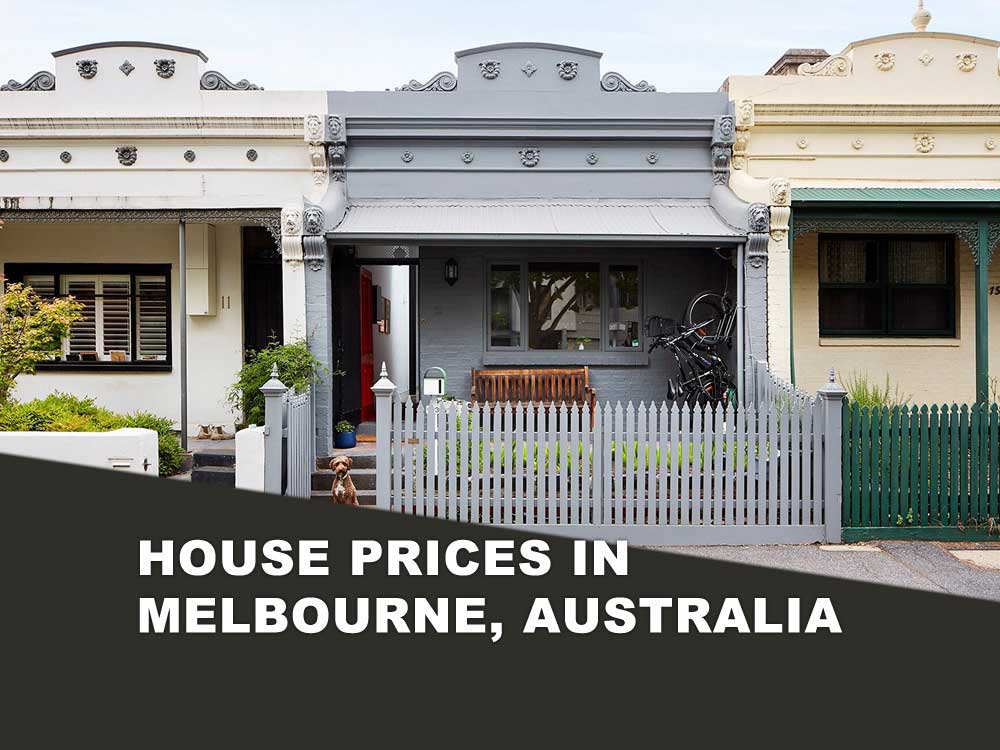Australian home affordability has always been a problem, but during the 1990s, it has gone from being an occasional cyclical worry to an ongoing one. The 20 % increase in pricing over the previous year has brought the problem back into the public limelight. Because of the rise in property values during the 1990s, there has also been an increase in debt, raising the possibility of financial instability if anything goes wrong with the capacity of debtors to pay their loans.
Some of the critical concerns of the Australian consumers are. What is the current state of the real estate market? What is the root cause of low affordability? What is the magnitude of the danger of financial instability? What can be done to address both issues? And what is the future for the value of real estate?
The percentage change in Melbourne’s average home price
Given that property prices have plateaued in February, Melbourne is already one of Australia’s capital markets. After consistent findings in December and January, prices of residential real estate in the city have remained steady.
With home prices rising by 12.5 per cent in the previous year and the median price being $800,000, Melbourne’s housing market has recovered from the commencement of the epidemic, which saw values decline by 5.6% from top to bottom in between the middle months of this year.
While Melbourne’s monthly growth hit a high, when home prices witnessed a monthly growth rate of 2%, this was the city’s slowest four-week gain in more than three decades. Since then, the quarterly growth has slowed significantly.
After a record increase in January, housing prices fell in February, which was weighed down by somewhat slower home price appreciation.
Research showed that property prices were steady in February, resulting in a total return of more than 2% for home sellers.
The typical property in Melbourne is currently selling for $998,000, having briefly breached the $1-million mark previously, only to have its value fall by an expected value of $4000 over the following month.
Melbourne’s average unit has increased to $626,000 from $626,000 during the last four weeks, representing a $2000 increase. As opposed to a year earlier, the average Melbourne home is now almost $139,000 more costly, while the average Melbourne unit has increased in value by $87,000.
Several Melbourne districts have surpassed the million-dollar mark in recent months, including Kielerand Maribyrnong.
The Issue of Poor affordability in Australia
Following are the issues of Poor Affordability faced by the Australian Citizens:
- With an 80% increase in income, capital city house prices have risen by 200 per cent in the previous twenty years. Ten years ago, house prices rose 55%, while earnings only increased 25%.
- The avg property price to median family fixed income has increased from three to about 6.5x in the previous three decades.
- Compared to other nations, the cost of living in Australia has worsened significantly. For large cities, the average ratio of home prices to earnings is seven times in Australia opposed to 4 times in the United Kingdom and four times in the United States, as per the housing Affordability Study of 2021.
- There is a significant disparity between home prices and wages and rentals in OECD nations.
- However, even though interest rates are at historic lows, the growth in prices relative to wages has resulted in an almost threefold increasing ratio of house debt to income ratio during the previous 30 years, pushing it up from the low-income end to the high-income end.
- First-time homeowners find it more challenging to enter the market because it now requires up to 7-8 years to save up for a house deposit. Grants from the state and depository programs may assist hasten this process, but borrowers now face a far greater debt load than those of a previous age.
Why is it so hard to afford a home in Australia?
Due to two primary factors, Australian housing prices have risen astronomically over the last 20 years. First and foremost, the drop in interest rates has given people more money to spend. In addition, there has been a lack of supply in response to demand.
After a population boom of around 1.5 million people per year began in the mid-2000s without a corresponding rise in housing supply, there has been a persistent shortage of housing in the United States ever since. Australian property is so costly despite having low or even negative interest rates is most likely due to a lack of provision opposed to the society’s underlying demand. Australians are also overrepresented in a few coastal cities, which doesn’t help matters.
However, when contrasted to the continuous shortage, several additional variables have played some part. These include negative leverage, the CGT reduction for investors, international purchases, and SMSF purchases, to name a few.
Insights of the Melbourne Housing Markets
The following are the sectors of the Melbourne real estate market that are most likely to underperform in the future:
- Apartments in high-rise buildings – in reality, it is possible that these types of assets will remain out of favor for an extended period.
- Off-the-plan flats and low-quality capital flats, especially those located near colleges, are among the most popular housing types.
- In established neighbourhoods inside newly constructed outer suburbs, new house developments where families are expected to have overcommitted themselves monetarily and most individuals will be out of work for a stretched period. As a result, many first-time homebuyers are availing different reward programs to purchase newly built homes, causing existing properties in these areas to suffer.
Conclusion
The Australian market’s home price rise is about 20 per cent this year, with prices reportedly already up by about 17 per cent. Due to decreasing affordability, diminished incentives, potentially higher fixed mortgage rates, continued lower than the average population, and financial restrictions, housing market growth is expected to decline to roughly 7 per cent in 2022. Australia will probably have to alter its home price projections upwards shortly if the latter does not occur.












